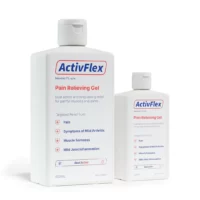Myofascial Release

Myofascial Release: Transforming Fascia Health with Myofascial Massage
Introduction
Myofascial release, a popular massage technique, targets the fascia—connective tissue enveloping muscles, organs, and bones. This method helps alleviate pain and improve mobility by releasing fascial restrictions.
Understanding Myofascial Release
Fascia, lying beneath the skin, intertwines through muscles and bones. Stress, injuries, and poor posture can cause fascia restrictions, leading to pain and mobility issues. Myofascial release, using specific manual massage techniques, aims to ease these restrictions, promoting better movement and relief from discomfort.
The Fascia’s Role in Body Balance
Fascia’s elasticity and strength play a crucial role in maintaining body balance. Healthy fascia distributes stress evenly throughout the body. However, restrictions disturb this balance, potentially leading to various physical ailments.
Treatment Perspectives from Physiotherapists
Physiotherapists and myofascial therapists consider the whole body when treating fascial issues. An issue in one area, like the knee, may stem from or affect other body parts due to the interconnected nature of the fascia. Addressing the fascia’s health can therefore have wide-reaching benefits for overall body function.
New Research Insights
Recent studies have emphasised the importance of fascia in overall musculoskeletal health. These insights have led to more targeted and effective treatment methods, enhancing patient outcomes. Research highlights that myofascial release can significantly reduce chronic pain and improve range of motion.
What to Do?
If you experience pain or discomfort related to fascia issues, consult a remedial massage therapist or physiotherapist. They can provide a personalised treatment plan, which may include myofascial release, to address your specific needs. Regular sessions can help maintain fascia health and prevent future restrictions.
Conclusion
Myofascial release offers a promising avenue for treating various conditions related to fascia. By addressing the interconnected nature of our body’s tissues, we can achieve better health and mobility. Consult your remedial massage therapist to explore how myofascial release can benefit you.
What to Do?
If you’re experiencing pain or discomfort that might be related to fascia issues, seek the professional advice of your remedial massage therapist or physiotherapist. They can offer a personalised treatment plan, including myofascial release, to address your specific needs.
Massage Therapists
Myofascial Release FAQs
- What is myofascial release? Myofascial release is a massage technique that targets the fascia, the connective tissue around muscles, organs, and bones, to alleviate pain and improve mobility.
- How does myofascial release work? It works by applying gentle sustained pressure to the fascia, helping to release restrictions and improve movement and comfort.
- What conditions can myofascial release help with? Myofascial release can help with chronic pain, headaches, back pain, fibromyalgia, and other musculoskeletal issues.
- Is myofascial release painful? It should not be painful. You might feel some discomfort as the fascia releases, but it should be manageable and reduce over time.
- How often should I get myofascial release therapy? This varies per individual. Your therapist will recommend a frequency based on your specific needs and response to treatment.
- Can I do myofascial release at home? While some techniques can be performed at home with tools like foam rollers, it’s best to consult a myofascial massage therapist or physiotherapist for professional guidance.
Related Articles
- What Conditions Can Massage Therapy Help? Discover the various conditions that massage therapy can effectively address.
- What are the Benefits of Getting a Massage? Learn about the numerous benefits of regular massage therapy sessions.
- What Are The Best Massage Techniques? Explore different massage techniques and their specific benefits.
- PhysioWorks Massage – Money Back Guarantee! Find out about our money-back guarantee on massage therapy services.
- How to Improve Mobility Tips and techniques for enhancing your mobility through physiotherapy.
- Managing Chronic Pain Strategies for using physiotherapy to manage chronic pain effectively.
- Preventing Injuries with Proper Body Mechanics Discusses how good body mechanics can help prevent injuries.
These articles provide a wealth of information on related topics, helping readers gain a comprehensive view of how physiotherapy can improve their health and well-being.




























